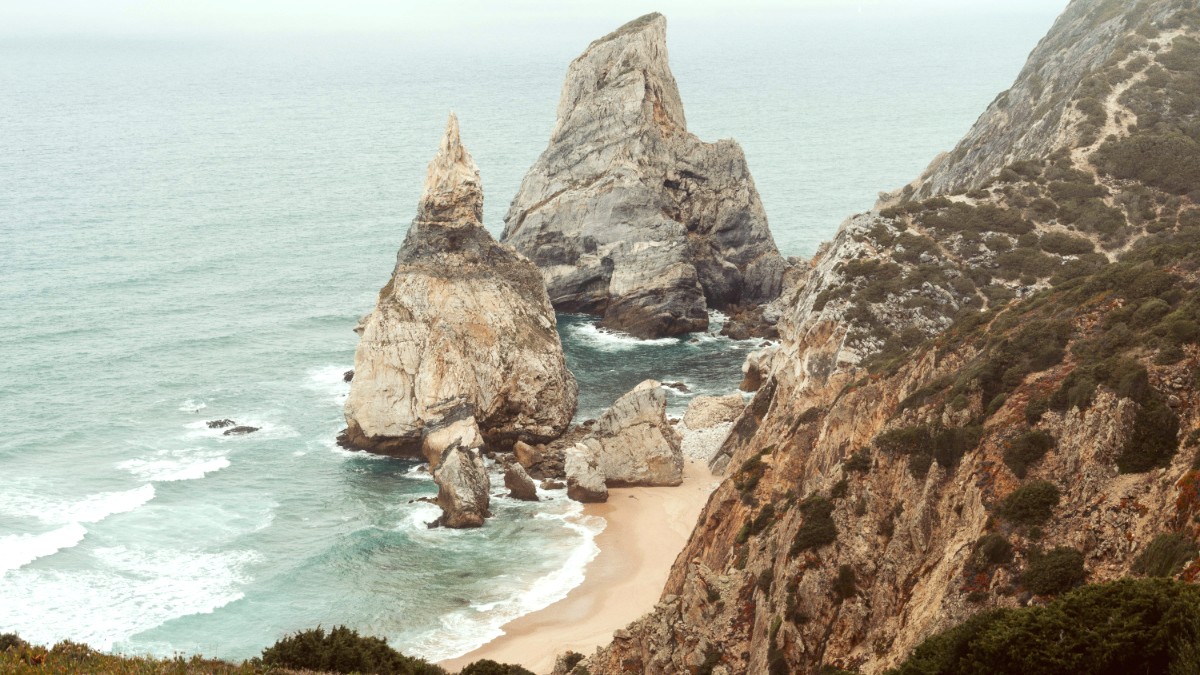
Lisbon, Portugal
Portuguese cuisine developed from simple, peasant cooking, making the most of locally available ingredients. The Age of Discoveries brought new spices and ingredients from around the world, though traditional recipes often retain a straightforward approach.
In Cascais, the history as a fishing village means an abundance of fresh catches, prepared with minimal fuss to highlight the quality of the fish. Olive oil is a fundamental ingredient, used generously in most dishes. Bread is also a staple, served with almost every meal.
The bedrock of Portuguese cooking, used for frying, dressing, and as a condiment.
These two herbs are nearly ubiquitous in seafood dishes, providing fresh, aromatic flavors. Parsley and bay leaves are also common.
Often called Portugal's national dish, it is prepared in hundreds of ways, from baked to fried, stewed, or scrambled.
A quintessential summer dish, simply grilled over charcoal, seasoned with olive oil and salt. Served with boiled potatoes and salad.
Find them at local "tascas" or traditional seafood restaurants.
Shredded salted cod mixed with finely chopped fried potatoes, onions, and scrambled eggs, garnished with black olives and parsley. A comforting and flavorful dish.
Found on most traditional Portuguese menus.
A rich and flavorful seafood rice dish, often served in a large pot, similar to a paella but with a more soupy consistency. Contains various fresh seafood.
Many seafood restaurants offer their version.
Portugal produces excellent and often affordable wines.
Sagres and Super Bock are the two main national lager brands, widely available on tap or bottled.
Mar do Inferno offers stunning ocean views and excellent fresh fish. Furnas do Guincho sophisticated preparations in a dramatic setting. Restaurante Panorama appealing sea views.
The historic center and marina area feature numerous mid-range restaurants. These establishments offer a comfortable dining experience with traditional Portuguese dishes and fresh seafood.
Local tascas off main tourist streets offer authentic, budget-friendly meals. Pastelarias are perfect for economical breakfast or lunch.
Traditional cuisine is meat/fish-based. Growing number of restaurants offer dedicated options.
Look for "vegetariano" or "vegano" signs.
Awareness of gluten-free is growing. Communicate clearly with a translation card.
Seafood, rice, potatoes are generally safer choices.
Italian, Indian, Asian options for a break from Portuguese flavors.
Limited dedicated options. Seek international cuisine or self-cater.
Carry a Translation card for specific allergies.
Locate vegetarian and vegan restaurants.
Check local event listings for food festivals. Offers sampling of specialties, live music.
Cascais Cool Jazz Festival (July) often has food vendors.
Occasionally, pop-up restaurants or themed dining events appear, especially in the marina or historic spaces.
Inquire locally for current concepts.
Portuguese wines pair well with the local cuisine. Ask staff for recommendations.
Many restaurants close between lunch and dinner service. Check hours.
Bread, butter, olives placed on your table are not free. Politely decline if not wanted to avoid charges.
Lunch (almoço) 12:30 PM - 3:00 PM. Dinner (jantar) from 7:30 PM, often later in summer.
Tipping is not mandatory but welcomed for good service. Refer to Section 2.3 for specific guidelines.
Growing awareness among local eateries for plant-based preferences.
Look for specific menu indicators.
Use translation cards for specific allergies as awareness varies across establishments.
Inform staff clearly.
Robust flavors, generous use of olive oil, garlic, and coriander.
Abundance of daily fresh fish and seafood, often simply grilled.
Pork dishes like 'bifana' and 'leitão' offer hearty options.
Always check current opening hours and reservation policies for fine dining establishments.